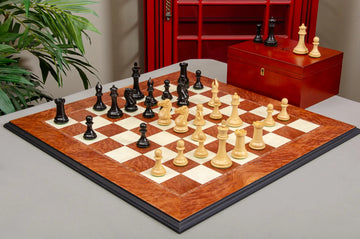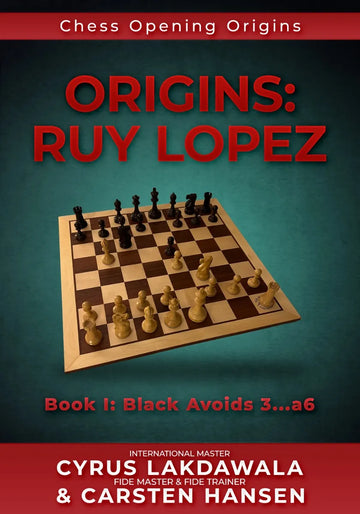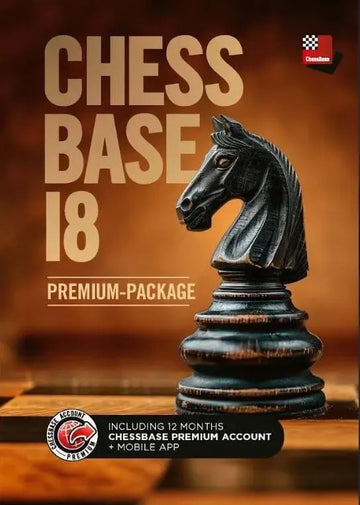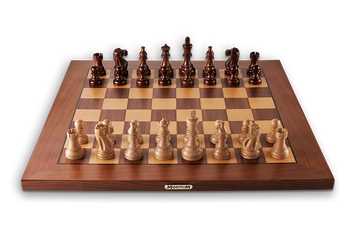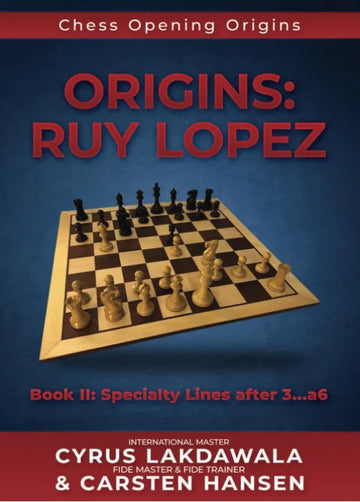Master The Ruy Lopez
The venerable Ruy Lopez (also known as the “Spanish Opening”) is a chess opening for White employed by beginners, club players, and world champions alike. The Ruy Lopez is one of the best, and most important chess openings at all levels. Learning to play it is something of a rite of passage for every serious chess player.
In this article, you will learn:
- The origins of the Ruy Lopez.
- Thematic middlegame ideas for White.
- The best book and video course to help add the Ruy Lopez to your opening repertoire.

The Ruy Lopez: Introduction And Origins
The Ruy Lopez opening is named after a 16th century Spanish priest, whose full name was Ruy Lopez de Segura.
Lopez was involved in some of the very earliest chess games for which records exist. He was one of the strongest players in Spain for about 20 years, at a time when chess (under the rules which we know today) was still a fairly new game.
Lopez also authored one of the earliest books about chess, Libro de la invencion liberal y arte del juego del axedrez - which in English translates to: “Book of the liberal invention and art of the game of chess.” Lopez wrote this book, in part, as a response to an even older book written by a Portuguese master named Pedro Damiano.
Damiano’s book argued that after 1. e4 e5, 2. Nf3 Black’s best next move was 2. …Nc6. Lopez disagreed with Damiano, arguing that 3. Bb5 refuted 2. …Nc6. This claim has seen Lopez’s name affixed to this chess opening for White ever since.

With the benefit of centuries of hindsight, we now know that 3. Bb5 is not a “refutation” of 2. …Nc6 at all. The position is still perfectly playable for Black.
However, Lopez’s contention that 3. Bb5 is the strongest way for White to meet 2. …Nc6 is hard to argue with. The Ruy Lopez is more popular, and scores better for White than any of White’s third-move alternatives at master level.

On the surface, the idea behind 3. Bb5 is that White threatens to capture Black’s knight via Bxc6. The knight on c6 currently defends Black’s central e5 pawn, and also helps Black to control the d4 square.
However, the ideas behind the Ruy Lopez run far deeper. White may use the light-squared bishop to capture Black’s queenside knight, or may not. As one of the oldest and most popular chess openings, there are many options for both sides at many different junctures, and there is a great deal of opening theory to explore.
This article does not cover all of the extensive lines within the Ruy Lopez. Instead, we will focus on some of the main ideas for White, which should be enough to get you started!
Thematic Ideas In The Ruy Lopez
The Exchange Variation (3. …a6 4. Bxc6)

Black’s most common next move in the Ruy Lopez is 3. …a6. This “puts the question” to White’s light-squared bishop. White must either follow through with capturing Black’s knight, or move the bishop out of harm’s way.
4. Bxc6 is known as the “Exchange Variation”. This capture is not the main move for White, because it sees White surrender the bishop pair to Black - a material imbalance which should favor Black in the long run. As compensation, White does some damage to Black’s pawn structure after Black recaptures 4. …dxc6. The loss of Black’s queenside knight also gives White a greater grip over the center.

It is important to note that White should not get greedy and capture the undefended e5 pawn with 5.Nxe5. This is strongly met by 5. …Qd4!, regaining the pawn for Black.
Instead, White should develop more calmly, with 0-0, Nc3 and d4 all being reasonable next moves for White. Another idea is 5. h3, to prevent the annoying 5. …Bg4 pin which Black often employs in the Exchange Variation, taking advantage of White’s lack of a light-squared bishop.
The Main Line (3. …a6 4. Ba4)
More commonly, White responds to 3. …a6 by retreating the bishop with 4. Ba4.

White’s idea is to eventually bring the bishop to b3, or to c2. For example, after some normal moves from both sides, a position such as this may arise.

Black has expanded on the queenside via …a6 and …b5, while White’s light-squared bishop has made it to b3, from where it points at Black’s kingside - in particular, the naturally vulnerable f7 square. The bishop also helps White to exert some control over the center.
There is a great deal of theory to learn in the Ruy Lopez Main Line. The plans change a lot depending on Black’s play. However, one further idea for White in many lines is playing c3 followed by d4, to strike in the center.
The Berlin Defense (3. …Nf6)
Black’s second-most played third move at master level is 3. …Nf6, which is known as the “Berlin Defense”.

Vladimir Kramnik made the Berlin Defense famous when he used it as his main weapon with Black to defuse Garry Kasparov’s 1. e4 repertoire during the 2000 World Chess Championship.
Related: Read more about the career of Vladimir Kramnik in Kramnik - Move By Move.
The Berlin Defense has a deservedly drawish reputation. In fact, there is a well-known line within it known as the “Berlin Draw” that can be used to secure a quick draw by repetition in situations where both players are happy to split the point. The Berlin Draw starts with 4. 0-0 Nxe4 5. d4 Nd6, followed by several more moves that top chess players all know by heart. See for example Nepomniatchi vs. Nakamura, 2022.
If you want to avoid the Berlin Draw and play for a win with White, then you should avoid 4. 0-0 and instead employ one of the so-called “Anti-Berlin” setups. The most popular of these is 4. d3, which securely defends the e4 pawn from any possible …Nxe4 ideas, and also avoids an early queen trade.
Getting Started With The Ruy Lopez
This article has provided a solid foundation for how to play the Ruy Lopez. However, as you might expect, there is a lot more to learn about this important chess opening for White!
If you wish to play the Ruy Lopez in serious competition under classical time controls, you will need to continue your education. We have two more recommendations to help take your understanding of the Ruy Lopez to the next level.
Related: Tips to improve your chess opening study.
Book Recommendation
When learning a new chess opening, it often pays to start with the basics. Before getting overwhelmed by screeds of opening theory in the Ruy Lopez, you should first look to understand more about the main moves and the main plans for both sides.
That’s why John Shaw’s book Starting Out: The Ruy Lopez is the perfect guide for those who are new to this chess opening for White. (Note: this book requires ChessBase)

The book concentrates on the key principles of the Ruy Lopez, with plenty of notes, tips, warnings, and exercises suitable for the improving player. Once you have been through this book, you will be able to play the Ruy Lopez to a very good level.
It is ideal for the player who wants to quickly get to grips with the Ruy Lopez and start playing it as soon as possible.
Video Course Recommendation
If you want the ultimate guide to mastering the Ruy Lopez, then look no further than Fabiano Caruana’s video training course: Navigating the Ruy Lopez.

Fabiano Caruana is a multiple winner of the US Chess Championship, was the 2018 World Chess Championship challenger, and has been one of the world’s strongest players for well over a decade, with a peak rating of 2800+.
If you choose to invest in this course, Caruana will be your instructor! As you go through it, you will not only be learning the Ruy Lopez opening, but you will also learn how an elite player approaches chess in general.
With over 16 hours of super-GM video instruction, all of Black’s approaches against the Ruy Lopez receive extensive coverage. You will learn both the concrete lines, as well as the guiding ideas to keep in mind as you explore the Ruy Lopez. By the end, you will be playing the Ruy Lopez like a pro.
Summary: Is The Ruy Lopez Right For You?
The Ruy Lopez will be a great addition to your White opening repertoire if you:
- Are unafraid of opening memorization: As one of the oldest and most popular chess openings, the Ruy Lopez has a deep well of opening theory surrounding it. Advanced chess players will need to roll up their sleeves and memorize the most important lines before they play the Ruy Lopez in serious competition.
- Enjoy rich, positional chess: Games beginning with the Ruy Lopez tend to involve a lot of careful maneuvering from both players at first. Tactics are unlikely to appear until later. If you enjoy accumulating small advantages and showcasing your positional understanding, then the Ruy Lopez will be an excellent fit for your style.
- Can be flexible in your approach to each individual game: White’s objectives in the Ruy Lopez are quite varied from game to game, depending on Black’s play. Sometimes White should launch an attack against the castled Black king. Other times, playing for the endgame is best. You should be a universal chess player who can play many different types of games if you are to be successful with the Ruy Lopez.
If that sounds like a chess opening for White that you would enjoy, then continue your education in the Ruy Lopez today!

